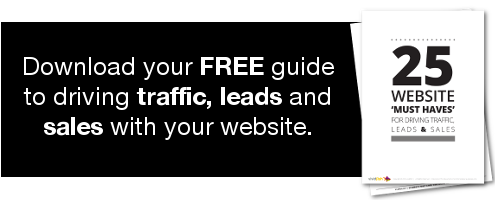3 Simple Steps to Becoming a Content Generation pro

Content marketing is just as much about consistency as it is about worth. If you create pointless content on a regular basis, or great content only now and then, your customers will be less likely to see you as a thought leader and instead go to someone who sticks to stable levels of quality and frequency. Though presenting some form of content on a weekly basis will be greatly beneficial to both you and your audience, fortnightly or even monthly offerings will also bring rewards. The important thing is to only increase if possible and never decrease, demonstrating your brand’s capabilities and dedication to providing valuable resources.
Video
The great thing about video is that it can be very short, providing the value is high. It doesn’t need to be Hollywood standard and in fact some businesses often share spur-of-the-moment clips taken on smartphones at conferences and events; you simply have to ensure that it’s worth watching and befitting your brand.
A video marketing plan will allow you to tie in topics and themes with other marketing activity, such as blog posts, email campaigns and PR coverage, so invest time into creating a calendar that can be adhered to whilst factoring in a little flexibility.
You can maximise on video production time by filming a few in one go, such as interviewing numerous members of staff one after the other, or creating your own bank of stock footage whilst out and about on other video jobs.
Upload videos to YouTube or Vimeo and share the link through Twitter, Google+ and LinkedIn, on your website, via email campaigns and anywhere else you have access to. Meanwhile, take advantage of Facebook’s direct upload option, as this will likely get you more views than a YouTube link. If possible, create a 15-second version for Instagram too, adding relevant hashtags as a means of gaining a wider reach.
Downloadable resources
If you regularly offer visitors something informative and practical for free, they’re bound to visit your website more often. In doing so, they get a much better feel for your products and services, which will ultimately lead to sales conversions. Good examples are how-to guides, actionable lists and simple design templates, as these can be put to good use immediately. They should always include your branding as well as a call to action, such as contact details and social media links.
Choose one that you really want to push and make it freely available from your homepage. This gives visitors a good reason to stay on your website for longer as they will feel that it’s worth researching further into your business.
When releasing a new downloadable resource, push it through as many promotional channels as possible simultaneously, such as social media, email newsletter, e-signature, and perhaps also a PPC advertising campaign. This will give your web traffic a boost and should lead to other rewards, from retweets to newsletter signups.
Blogs
First off, make sure that your blog is hosted on your own website (rather than, say, Tumblr), otherwise you’ll be sending visitors to another source and could miss out on subsequent enquiries.
The things that you write about should be relevant to your company, suitable for your audience, concise, interesting, worth reading and, just as importantly, worth sharing. Evergreen content that will be as useful in a year’s time as it is on the day it’s published works well, especially when interspersed with time-sensitive pieces such as fundraising activity and upcoming events. Your blog should be a window into your business, allowing visitors to see the full character behind your brand
Blogs always benefit from having an accompanying image so that social media websites can load it in the link preview. You can then add additional visual elements if you wish, such as more images, videos, infographics, polls and so on. This helps to bring the piece to life and can break up large blocks of text.
Always finish each post with a call to action if possible. Without one, the reader will most likely leave your website sooner than desired and you’ll miss out on other conversions. If you’re stuck for a CTA, you can’t go wrong with a social media invitation, encouraging a follow on Facebook and other social media platforms.
